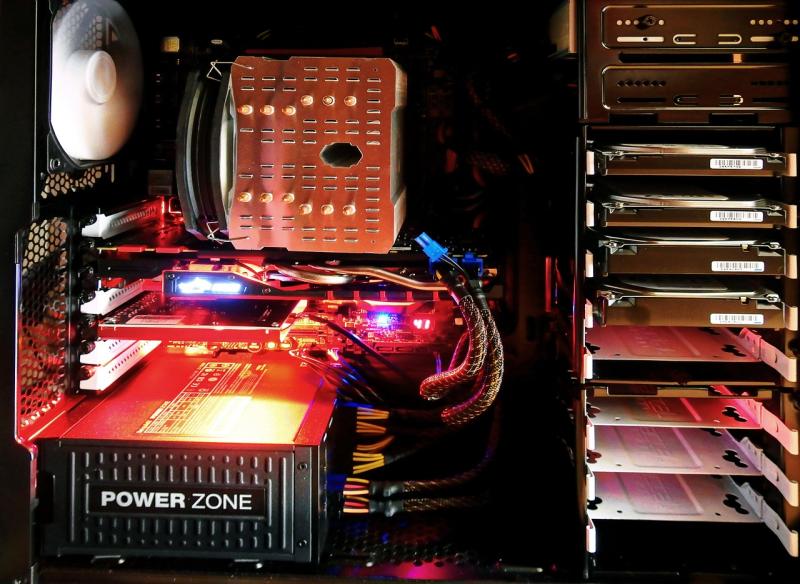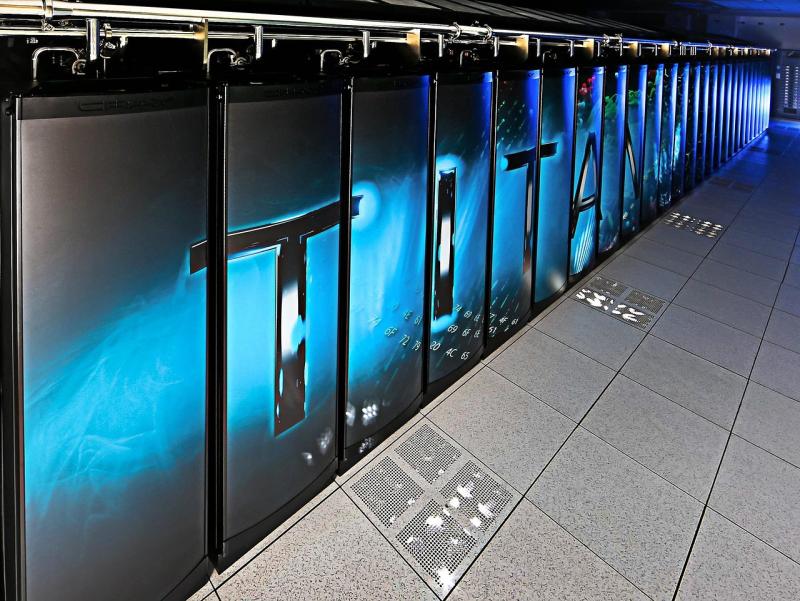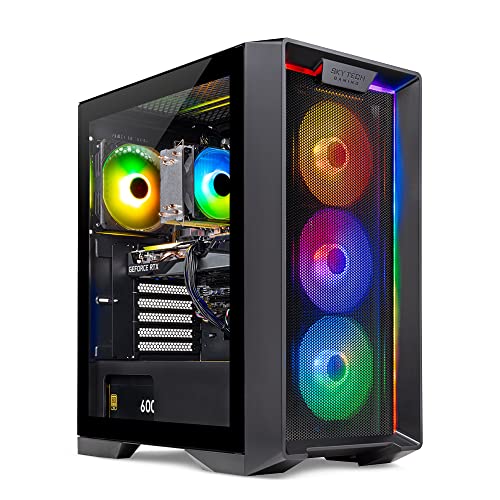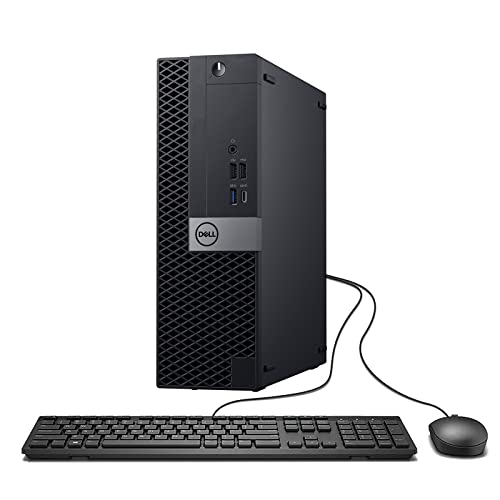Future‑proofing your high‑performance PC is crucial for ensuring that it remains capable of meeting evolving technology requirements. Scalability, modularity, and forward‑thinking design choices lay the foundation for a system that can be upgraded incrementally without needing a complete overhaul.
Select a motherboard with ample PCIe slots, memory channels, and expansion options. Ensure that your power supply and cooling system can handle future component upgrades, and always opt for the latest connectivity standards like PCIe 4.0 or 5.0. Prioritize compatibility by choosing components that support overclocking and have proven longevity. Regular firmware updates and modular design principles allow you to scale your system gradually as demands increase.
Plan your build with incremental upgrades in mind—invest initially in core components while keeping upgrade pathways open. Monitor industry trends and benchmark emerging technologies to decide when and how to expand your system. A well‑documented build process can later simplify future maintenance and component swaps.
Building a future‑proof high‑performance PC requires strategic planning and a focus on scalability. With a modular, adaptable design and carefully chosen components, you can create a system that remains competitive and agile in the face of rapid technological advancements.
Future-Proofing Your High-Performance PC: A Comprehensive Guide
Ensuring your high-performance PC remains capable of tackling tomorrow’s software and hardware demands isn’t luck—it’s strategy. Future-proofing your PC focuses on scalability, modular design, and smart component selection to deliver a system that evolves with you. At Power-PC-Store, we help you build a future-proof PC that stands the test of time, whether you’re gaming, creating content, or running intensive simulations.
Why Future-Proofing Matters
- Cost Efficiency: Incremental upgrades—like adding RAM or swapping the GPU—are more budget-friendly than replacing the entire system.
- Performance Longevity: Adopting standards such as PCIe 4.0, PCIe 5.0, DDR5 memory, and NVMe storage prevents bottlenecks as new peripherals arrive.
- Reduced Downtime: Modular design and clear upgrade pathways simplify maintenance and part swaps to minimize rebuild time.
Key Considerations for a Scalable Build
- Motherboard Selection: Choose boards with multiple PCIe 4.0/5.0 slots, 4+ DIMM channels, and robust BIOS support for overclocking and firmware updates.
- Power Supply & Cooling: Opt for an 80 Plus Gold/Platinum PSU with 20–30% wattage headroom and modular cabling, plus high-flow air or liquid cooling solutions.
- Connectivity & Standards: Embrace USB 4.0, Thunderbolt 4, and reserve front-panel headers for future fans, RGB controllers, and expansion modules.
- Component Longevity: Select reputable brands with strong warranties, enterprise-grade SSDs/HDDs, and high-endurance NVMe drives for reliable performance.
Implementation Strategies for Incremental Upgrades
Phase 1 – Core Foundation: Invest in a premium motherboard and power supply. Start with a reliable mid-range CPU and GPU that meet today’s needs while leaving upgrade room.
Phase 2 – Memory & Storage Boost: Equip 16–32 GB DDR5 RAM in two sticks, leaving free DIMM slots. Pair a 1 TB NVMe SSD for OS/apps with a high-capacity HDD or SATA SSD.
Phase 3 – Advanced Performance: Leverage PCIe 5.0 slots for next-gen GPUs, expand RAM to 64 GB+ for virtualization or editing, and add NVMe expansion cards or RAID setups for maximum throughput.
Phase 4 – Overclocking & Cooling: Unlock safe CPU and memory overclocks via BIOS/UEFI profiles. Upgrade to custom water-cooling loops or high-end air coolers to maintain low thermals under load.
Practical Tips to Simplify Future-Proofing
- Keep spare SATA cables, fans, and power leads on hand for unplanned expansions.
- Label cables and document your build with photos and notes to streamline future swaps.
- Register warranties and monitor firmware updates for motherboard, GPU, and storage components.
- Follow industry news and benchmark results to time your upgrades effectively.
Maintenance & Updates
- Firmware & Drivers: Regular BIOS, chipset, and GPU driver updates unlock performance gains and new hardware compatibility.
- Dust Management: Clean fans, radiators, and filters every 3–6 months to preserve optimal airflow and thermal efficiency.
- Health Monitoring: Use tools like HWMonitor and CrystalDiskInfo to track temperatures, voltages, and SSD health status.
Conclusion: Maximizing ROI with Future-Proofing Strategies
Building a future-proof PC requires foresight and adaptability. By choosing a modular design, planning clear upgrade pathways, and investing in long-lasting components, you extend your system’s life and performance. At Power-PC-Store, we offer high-performance PCs with PCIe 4.0/5.0 support, scalable build options, and modular design principles that ensure your rig stays current. Explore our curated selection of motherboards, power supplies, cooling solutions, and premium components today—and start building your future-proof system.
Future-Proofing Your High-Performance PC: A Comprehensive Guide
Building a high-performance PC that stays relevant for years takes more than buying the latest parts. Future-proof your PC by focusing on scalability, modular design, and intelligent component selection. This guide explores why future-proofing matters, key considerations for a scalable build, modular design principles, and smart component selection strategies. We delve into adopting standards like PCIe 4.0/5.0, DDR5 memory, and NVMe storage, and outline implementation strategies for incremental upgrades. Finally, we cover practical tips, maintenance and update plans, case studies of successful long-lasting builds, motherboard and GPU trends, and best practices for SEO-optimized content aimed at online store audiences.
Why Future-Proofing Your High-Performance PC Matters
Defining future-proofing helps you balance performance today with expandability tomorrow. A truly future-proof PC can adapt to game-changing technologies and evolving workloads without a total overhaul.
Future-proofing prevents early obsolescence and spreads your investment over many years of use. High-end CPUs, GPUs, and motherboards can handle current demands, but new technologies arrive rapidly. Planning for upgrade pathways ensures you won’t be stuck replacing your entire system when one component falls behind.
Moreover, future-proofing strategies reduce e-waste by extending the usable life of your PC. In an era where computing churn generates massive amounts of electronic waste, adopting modular design and upgrade-friendly standards mitigates environmental impact and keeps your system relevant longer.
Key Components of a Scalable Build
A scalable build focuses on core components that determine longevity and upgrade potential:
-
CPU and Platform Choose a socket and chipset that support multiple processor generations. AMD AM5 and Intel LGA1700 platforms offer multi-year upgrade windows. Prioritize high core-count, efficient architectures, and support for overclocking to stretch performance over time.
-
Motherboard with Expansion Pick a board with ample PCIe slots (for GPUs, networking cards, and NVMe add-in cards), multiple M.2 sockets, and future-proof I/O (USB C, Thunderbolt). A board like AMD’s X670 or Intel’s Z790 ensures access to PCIe 5.0 lanes and DDR5 memory, while leaving room for more storage or add-on cards.
-
Memory (RAM) Start with at least 32 GB of DDR5 at 6000 MT/s or higher. Motherboards with four memory slots let you upgrade to 64 GB or beyond, doubling capacity as workloads grow without replacing modules. Low latency (CL30 or below) maximizes throughput for games and productivity tasks.
-
Graphics Card (GPU) Modern GPUs drive visual performance and GPU-accelerated workloads. Aim for at least 12 GB of VRAM, currently offered by cards like the NVIDIA RTX 4070 or AMD RX 7800 XT. Support for ray tracing, DLSS/FSR, and modular GPU coolers helps your card remain viable for new titles and AI tasks.
-
Storage NVMe SSDs boost load times and system responsiveness. Use a primary PCIe 4.0/5.0 NVMe drive (1 TB or more) and leave at least one extra M.2 or SATA slot for expansion. High-capacity drives (2 TB+) handle large game libraries and data sets while leaving room for future modules.
-
Cooling and Case Efficient airflow and upgrade-ready cooling solutions prolong component life. Cases with modular drive cages, plenty of fan mounts, and dust filters make future enhancements painless. A 360 mm AIO or high-end air cooler maintains low temperatures, enabling stable overclocking down the road.
-
Power Supply (PSU) Invest in an 80 Plus Gold or better PSU with headroom (750–1000 W) and fully modular cables. A robust PSU handles component additions (ray-tracing GPUs, multiple NVMe SSDs) without needing replacement, and improves efficiency and noise levels over time.
Modular Design Principles for PCs
Modular PCs break the monolithic motherboard approach into replaceable modules, enhancing repairability, repair time, and e-waste reduction. There are three modularity levels:
-
Factory Modularity: Component choices (CPU, storage, memory) made at purchase.
-
Field Modularity: Upgrades like RAM, SSDs, or I/O cards performed by trained technicians without factory tools.
-
User Modularity: End-user upgrades using standard tools (e.g., swapping RAM or TB4 adapters).
Intel’s 2025 modular PC architecture reimagines the motherboard as interchangeable modules—core board, I/O board, and power board—for easy CPU, GPU, or port replacements without scrapping the entire system. User-accessible modules, such as M.2 SSDs and PMIC-equipped DDR5 memory sticks, underpin the right-to-repair movement and ensure your PC remains upgradeable well beyond its initial configuration.
Smart Component Selection Strategies
CPUs: Platform Longevity and Upgrade Paths
Choose a CPU on a long-lived platform (AM5, LGA1700). Prioritize Zen 4/5 or Raptor Lake/Ultra families with high core counts (8+ cores for gaming, 12+ for content creation) and efficiency ratings for low TDP. Overclocking support extends performance further. AMD’s 7000 series and Intel’s 13th/14th Gen Ultra offer both raw performance and multi-year platform support.
GPUs: VRAM and Feature Support
Memory buffer size is crucial for future titles. A 12 GB VRAM card like the RTX 4070 or RX 7800 XT balances price and longevity without paying for 16 GB cards at a premium. Look for cards that support PCIe 4.0/5.0, ray tracing, and AI-driven upscaling (DLSS, FSR) to keep up with next-gen games and creative work.
Memory: Speed vs. Capacity
DDR5 prices are falling and deliver double the bandwidth of DDR4. A 2×16 GB kit at 6000 MT/s or 2×32 GB at 5600 MT/s ensures smooth multitasking and headroom for future OS and application demands. Use motherboards with 4 DIMM slots to allow incremental upgrades without waste.
Storage: NVMe Generation and Scalability
Primary drives should be PCIe 4.0 or 5.0 NVMe for peak throughput (up to 7–12 GB/s). Secondary drives can reuse older Gen 4 or Gen 3 slots for large capacity (2–8 TB) mechanical or SSD storage. Ensure your motherboard has multiple M.2 slots or ample SATA ports for expansion.
Motherboards: Chipset and Feature Sets
Higher-end chipsets (X670, X670E, Z790, Z890) guarantee more PCIe 5.0 lanes and USB4/Thunderbolt. Midrange boards (B650, B760) offer sufficient VRMs and I/O for most enthusiasts at lower cost. Check for BIOS Flashback, robust VRM cooling, dual-BIOS safety nets, and quality audio/network codecs for a complete feature set.
Power Supply: Headroom and Efficiency
PSUs with an 80 Plus Gold or Platinum rating provide high efficiency at varied loads. Fully modular designs improve airflow and simplify cable management for future hardware swaps. Choosing a PSU with 25–30% more wattage than your peak system demand ensures stable operation and room for GPU upgrades.
PCIe 4.0 vs. PCIe 5.0: What You Need to Know
PCIe 5.0 doubles PCIe 4.0 bandwidth (32 GB/s vs. 16 GB/s at x16), but today’s GPUs do not saturate PCIe 4.0 under normal conditions. The key upgrade is in NVMe storage. A Gen 5 NVMe SSD can deliver up to 12 GB/s sequential read/write speeds—twice what Gen 4 drives achieve—drastically reducing load times and data transfer bottlenecks for large projects.
While PCIe 5.0 GPUs are on the horizon, most current GPUs perform identically on x8 or x16 lanes of Gen 4, making Gen 5 support primarily a future-proofing consideration for upcoming cards and storage devices. If building today, Gen 4 boards strike a balance between price and peak performance.
DDR5 Memory: Features and Advantages
DDR5 SDRAM doubles bandwidth and capacity over DDR4. Starting at 4800 MT/s and scaling to 8000 MT/s+, DDR5 brings on-die ECC, per-module power management (PMIC on DIMM), and two independent 32-bit channels for enhanced efficiency. Key benefits:
-
Bandwidth: Up to 62.7 GB/s per dual-channel kit at DDR5-4800, doubling the DDR4-3200 bandwidth.
-
Capacity: Up to 128 GB per DIMM, allowing massive memory configurations for workstation tasks.
-
Power: 1.1 V supply vs. 1.2 V DDR4, improving efficiency and reducing heat.
-
Future-proof: Mandatory on AM5 and LGA1700 platforms, ensuring compatibility for years to come.
DDR5 costs have dropped below DDR4 pricing in 2025, and no motherboard supports both standards simultaneously. Invest in DDR5 now to avoid a second board upgrade later.
NVMe Storage: Speed and Scalability
NVMe (Non-Volatile Memory Express) leverages PCIe lanes to deliver exceptionally low latency and high throughput for SSDs. Compared to SATA-based SSDs, NVMe drives can achieve 4–8 GB/s on Gen 4 and up to 12 GB/s on Gen 5, for near-instant OS boot and app loading times.
Choose M.2 NVMe SSDs for the primary drive and ensure your board has at least two slots for RAID or future storage add-ons. PCIe 5.0 drives are still emerging, so Gen 4 NVMe provides an excellent future-proof compromise.
Implementation Strategies for Incremental Upgrades
Rather than replacing all components at once, adopt a staged upgrade plan:
-
First Stage: Storage & PSU Swap your primary drive for a high-speed NVMe SSD and upgrade your PSU to a reliable 750–1000 W Gold model. This delivers immediate improvements in load times and system stability with minimal disassembly.
-
Second Stage: Memory & Cooling Move to a 32 GB DDR5 kit and install a quality AIO cooler or high-end air cooler. Lower temperatures boost long-term component health and enable modest CPU overclocking, extending performance headroom.
-
Third Stage: Motherboard & CPU With storage, power, and cooling optimized, switch to a high-end AM5 or LGA1700 board. Transfer your existing CPU until you decide on a next-gen chip (Ryzen 7/9 7000 series or Intel Ultra 7/9 300/400 series), minimizing downtime and cost.
-
Fourth Stage: GPU Upgrade Finally, upgrade the GPU to a current-generation model (RTX 4070/4080 or RX 7800/7900) that aligns with your target resolution and refresh rate. If your PSU and case are sized correctly, this swap is straightforward.
-
Final Stage: New CPU & Big Upgrade When you’re ready for a full system refresh (5–7 years later), you may only need new CPU and GPU modules on the same motherboard and memory, provided standards remain compatible.
This incremental approach smooths cash flow, allows you to ride used-market savings, and keeps your PC operational throughout the upgrade process.
Practical Tips to Simplify Future-Proofing
-
Buy quality once: Invest in reputable brands with multi-year warranties for motherboards, PSUs, and coolers.
-
Use cable management: Modular PSUs and well-routed cables improve airflow and make component swaps easier.
-
Keep spare parts: Extra M.2 heatsinks, fan mounts, and SATA power cables mean less hassle when adding drives or fans.
-
Document your build: Note BIOS versions, RAM kits, and driver versions to streamline troubleshooting after an upgrade.
-
Shop sales and bundles: Look for CPU/motherboard bundles and GPU sales in the 6–12 month time window after launch for best value.
By planning these details early, you lessen the friction of future changes and keep your PC relevant with minimal effort.
Maintenance and Updates for Longevity
A PC that runs hot or sits dusty will age prematurely. Establish a maintenance routine:
-
Dust and airflow: Clean intake filters and GPU sinks every 3–6 months to maintain optimal cooling.
-
Thermal paste: Reapply paste to CPU and GPU every 2–3 years to prevent thermal creep.
-
BIOS and drivers: Update BIOS for platform security and new CPU support; keep GPU drivers current for game optimization.
-
Health monitoring: Use software (HWMonitor, CAM, or manufacturer tools) to track temps, voltages, and fan speeds.
Regular upkeep ensures your components remain healthy and perform at peak levels, delaying obsolescence.
Case Studies of Future-Proof PC Builds
Case Study 1: Hybrid Gamer/Streamer Rig (2022 Build → 2025 Upgrade)
-
Original: Ryzen 7 5800X, RTX 3070, 16 GB DDR4-3600, Gen 4 NVMe.
-
Upgrades 2023: PSU to 750 W Gold, 32 GB DDR4-3600.
-
Upgrades 2024: Added second Gen 4 NVMe and large AIO cooler.
-
Upgrades 2025: Motherboard → X670E; CPU → Ryzen 7 7800X3D; GPU → RTX 4070 Super. System still handles 1440p 144 Hz gaming and 1080p 60 fps streaming with new titles.
Case Study 2: Workstation for 3D Rendering (2021 Build → 2025 Upgrade)
-
Original: Ryzen 9 5900X, Dual RTX 3070 Ti, 64 GB DDR4-3200, RAID 0 NVMe.
-
2022: Switched to 80 Plus Platinum PSU and 2×64 GB DDR4-3600.
-
2023: Added PCIe 5.0 NVMe boot drive, upgraded to AIO 360.
-
2024: Moved to X670E ProArt board, CPU → Ryzen 9 7950X; GPU → RTX 3080 16 GB. System now renders 4 K animations 30% faster and manages real-time 3D scenes without lag.
These examples show incremental upgrades extending system life beyond four years with strategic component swaps and platform-driven improvements.
Motherboard Manufacturers and Trends
Key motherboard brands include ASUS, MSI, Gigabyte, and ASRock. Each offers distinct feature sets:
-
ASUS ROG/ProArt: Premium features (AI overclocking, ARMOURY Crate, Thunderbolt/USB4).
-
MSI MEG/MAG: Focused on performance and cooling; GameBoost and Q-Flash Plus features.
-
Gigabyte AORUS: Advanced power delivery, high-speed networking, and aggressive RGB.
-
ASRock Taichi/Steel Legend: Strong VRMs and unique styling at competitive prices.
Emerging Trends
-
AI-driven BIOS tuning: Auto overclocking and memory calibration based on workload profiles.
-
Built-in power meters: Onboard OLED/LED readouts for real-time power draw and system vitals.
-
Enhanced VRM designs: 18+2 or higher for stable CPU overclocking on modern Ryzen and Intel chips.
-
Modular I/O boards: Detachable I/O modules to support custom cases and easier repairs.
By choosing a reputable vendor and staying attuned to these trends, you ensure your platform stays state-of-the-art.
GPU Standards and Future Compatibility
GPU makers are standardizing on PCIe 5.0 for future-proof interoperability and wider bandwidth. Key upcoming standards:
-
DisplayPort 2.1: Supports 8 K at 60 Hz or 4 K at 240 Hz over a single cable.
-
HDMI 2.1a: Enables VRR, ALLM, and 4 K120 with PC-friendly DSC support.
-
AV1 encoding hardware: Significantly reduces streaming bitrates for remote workloads.
-
Programmable RDF (Ray Tracing): Advances in real-time GI (Global Illumination) for lifelike graphics.
Prioritize GPUs with these emerging standards to ensure compatibility with future displays, streaming needs, and compute acceleration.







